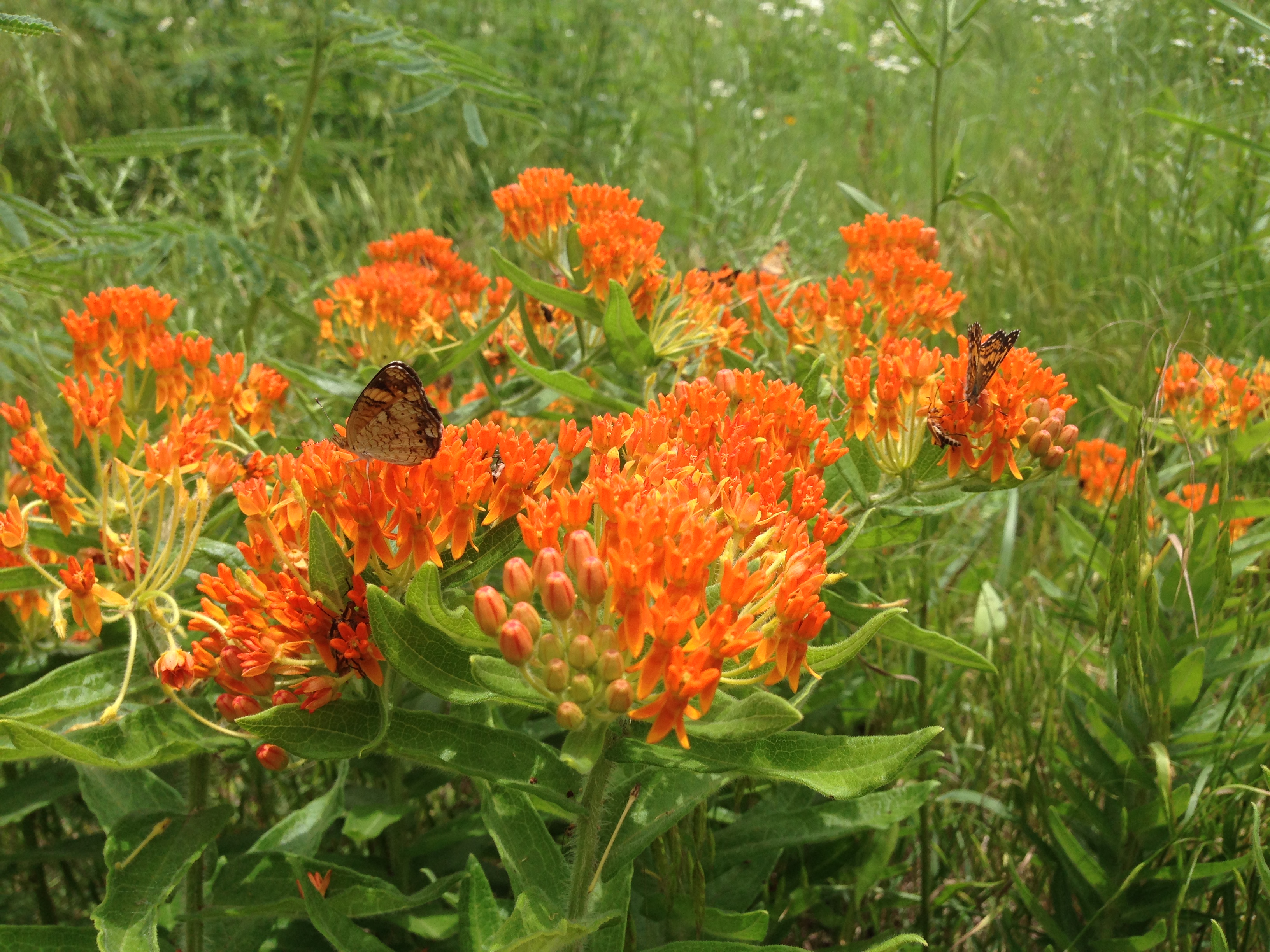As I drove through the Flint Hills this week in late June, there were orange dots among the prairie grasses that caught my eye. Few plants found on the prairies of Kansas are as readily recognizable as butterfly milkweed (Asclepias tuberosa). This classic prairie plant found throughout the eastern two-thirds of Kansas blooms from late May into August.
Butterfly milkweed is a stout one to two foot tall perennial with a deep, coarse, fibrous root system. Flowers range from deep orange-red in the eastern part of its range to lighter orange and finally yellow farther west and south in Kansas. Unlike the numerous other milkweeds found in Kansas, butterfly milkweed does not exude a white milky sap when the stem is cut or a leaf is removed.
Generally available in garden centers and nurseries as well as our FloraKansas Plant Sale, butterfly milkweed can easily be used in a perennial border or in wilder, more naturalistic plantings. Somewhat slow to establish because of the coarse roots, butterfly milkweed is a long lived plant and an excellent competitor in the garden when challenged by more vigorous plants.
While it prefers full sun and good drainage, it will tolerate light shade. It is also very drought tolerant once established. Several cultivated varieties of butterfly milkweed have been developed. These include ‘Gay Butterflies’, a mix of red, orange, and yellow flowered plants, and ‘Hello Yellow’, an exclusively yellow flowered selection.
The common name is derived from the blossom’s ability to attract butterflies and a host of pollinating insects. The complex flowers actually have pollen sacs attached to a y-shaped structure or stirrup. These structures attach to visiting insects and are consequently carried off to the other flowers in the vicinity, allowing cross pollination to occur. Fruits are long, skinny pods, typically three to six inches long. These contain many seeds, each having a tuft of white, silky hairs. As the pod dries and splits in the fall, the seeds are carried away by the breeze, each equipped with a tiny parachute-like structure.
Do your garden a favor and include some butterfly milkweed. Its many ornamental and functional assets, plus its rugged character will make it a focal point in the summer garden for years to come. Plus, you will be rewarded as pollinators such as Monarchs seek out this beautiful native wildflower.



